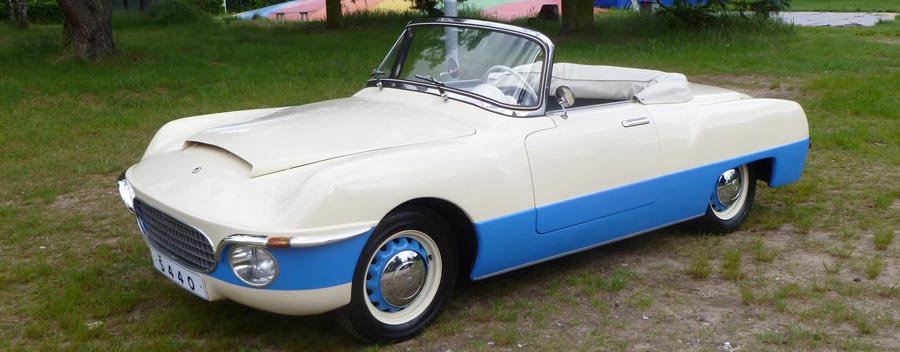
Hi Gang…
One of the best things about running Forgotten Fiberglass is meeting new folks – especially those with an interest on the history of fiberglass outside the USA too! Today I have the honor of introducing you to Pal Negyesi – a Hungarian automotive historian who researches the history of all cars but especially those in – or close to – his native country which is Hungary. Pal runs two websites of interest to automotive enthusiasts as follows:
Click here to visit Pal’s website – automuseums.info
This website is an international guide to automobile museums. There are currently 1123 museums listed in the directory and may be the most comprehensive guide of automobile and motorcycle museums worldwide.
Click here to visit Pal’s other website – ceautoclassic.eu
This website focuses on central European classic car news, events, books and more
Recently, Pal contacted us to share a story he posted on his website about a Czechoslavian fiberglass sports car made in 1955 – the Skoda 440 Polytex Roadster. Interestingly, we posted a story about another fiberglass sports car body at a Czechoslovakia exhibition in 1956:
Click here to see our story on the Czech body in 1956
So…primed and ready to learn about our second Czechoslovakian sports car, let’s see what Pal had to say about the history of the Skoda 440 Polytex Roadster. And away we go 🙂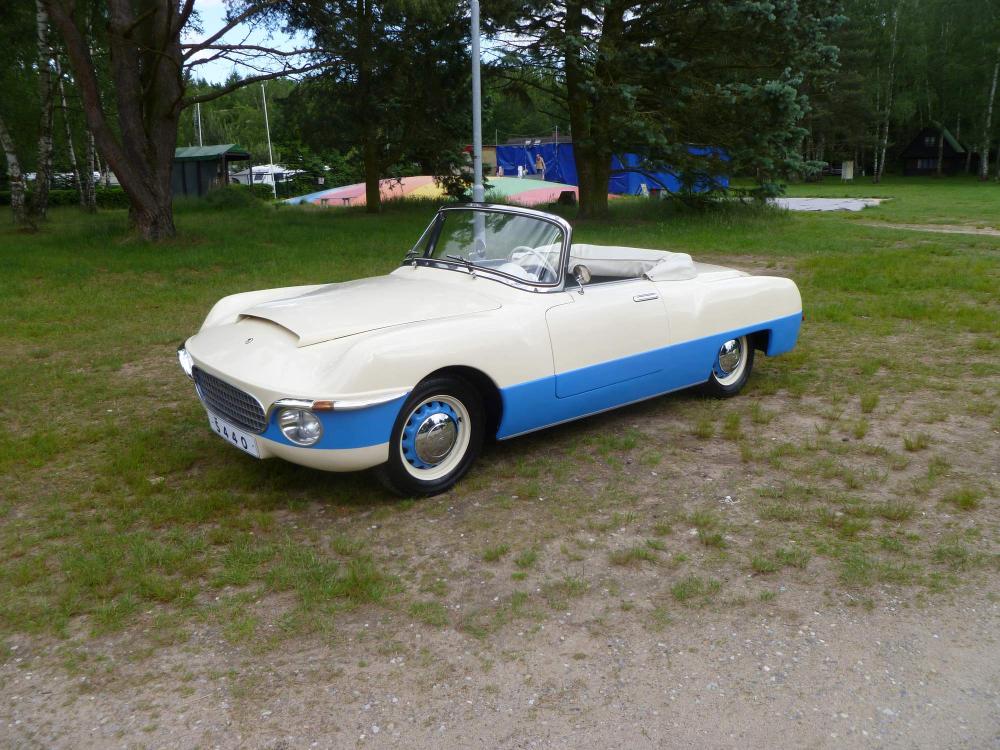
Škoda 440 Polytex Roadster
Story from: CEAUTOClassic: http://ceautoclassic.eu/skoda-440-polytex-roadster/
A plastic bodied Czech roadster has recently been restored. It was one of the highlights of the 24th meeting of the Historical Škoda Club in Hradec Králové, Czech Republic
This one-off Škoda was designed by Otakar Diblik in 1955 with the aim to complement the existing 440 lineup. The 440 and its slightly updated version, the Octavia were the staple Czechoslovakian cars of the 1950s and 1960s. They did not look especially bad and the 450 (later Felicia) convertible was a dream car behind the Iron Curtain.
Diblik moved away from the usual Škoda design language. The end result was a bit strange, but definitely unique. The body, weighing just 56 (kilos?) was made of glass-reinforced plastic – a novelty at the time. It was supplied by a local specialist, Kovona in Karvina.
Kovona Karviná started the production of glassfibre laminates in 1953 as one of the first companies in East and Central Europe. At the beginning it focused on special products for military applications (e.g. additional tanks for jet planes) and high-strength helmets for motorcyclists and miners. Fabrication of the first composite components – both for special racing and stock cars – and for trailer caravans is also documented.
Final assembly took place at the former Sodomka coachbuilding company, which was by then state-owned and renamed to Karosa. The car was completed in 1956. Eventually it received a hard-top made from plexiglass. Later its exterior was slightly altered.
Naturally serial production was out of the question. The prototype lingered at Karosa, then it was sold off. It went to various owners, before it ended up in Hradec Kralove, at a local collector who restored it with help from the Karosa company.
Summary:
Pal is not a stranger to visiting the states. He shared with me a visit to our country – many years ago – in a recent e-mail:
Geoff…I love fibreglass bodied cars. In fact I was lucky enough to see a 1950 Kurtis with partly fibreglass body back in 1996 at Paul Sable’s collection. I also checked out 1950s issues of Motor Life, Road and Track etc. in the mid-1990s looking for American custom cars. I also have some Road &T rack books from the era on custom cars. I just love oddities 🙂
And as I am a Hungarian and a researcher of Hungarian motoring history, I studied Hungarian efforts as well, like a Trabant-based buggy (!) from the late 1960s. Check “Kesjár János” – who would be János (John) Kesjár according to English naming conventions – here:
http://magyarjarmu.hu/autok/30-hazai-hazilag-keszult-auto-amit-eddig-nem-ismertunk/
We’re lucky to have such a great team of folks that participate with us here at Forgotten Fiberglass, and great thanks goes today to Pal Negyesi for sharing his story and websites too. Much appreciated Pal 🙂
Hope you enjoyed the story, and remember gang…
The adventure continues here at Forgotten Fiberglass.
Geoff
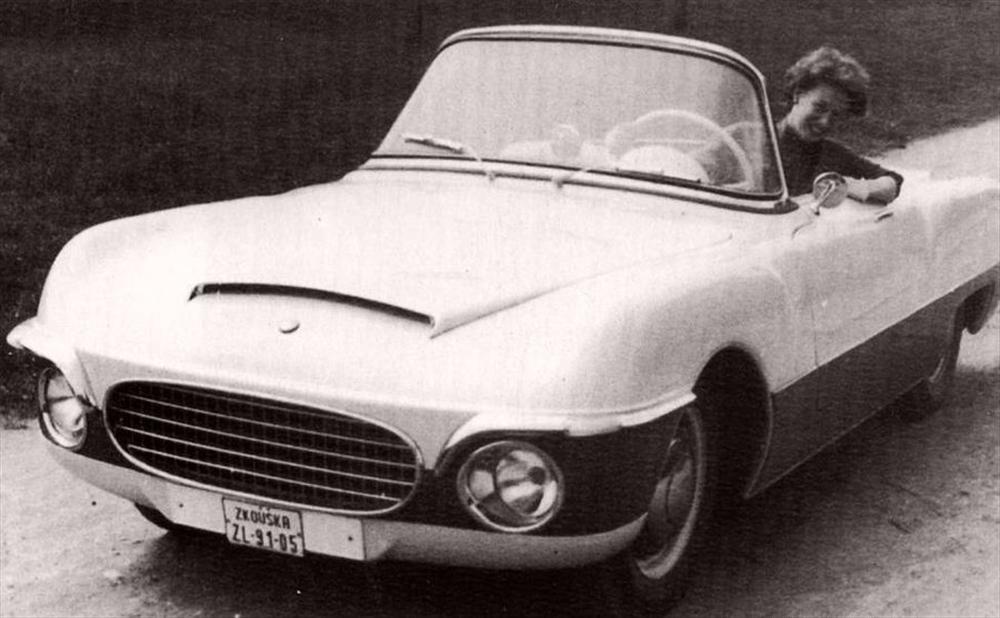
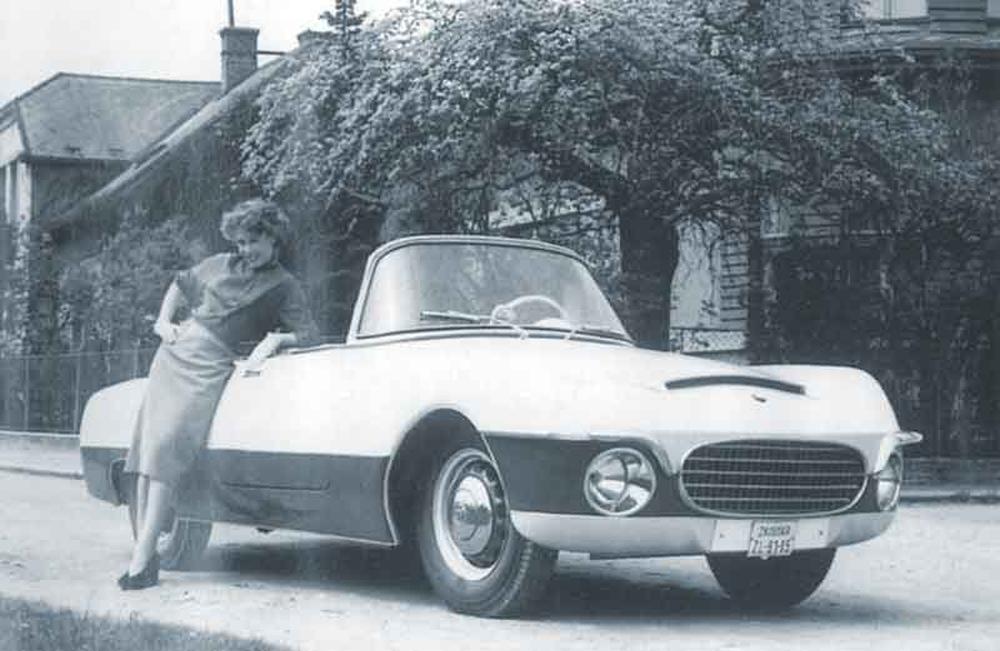
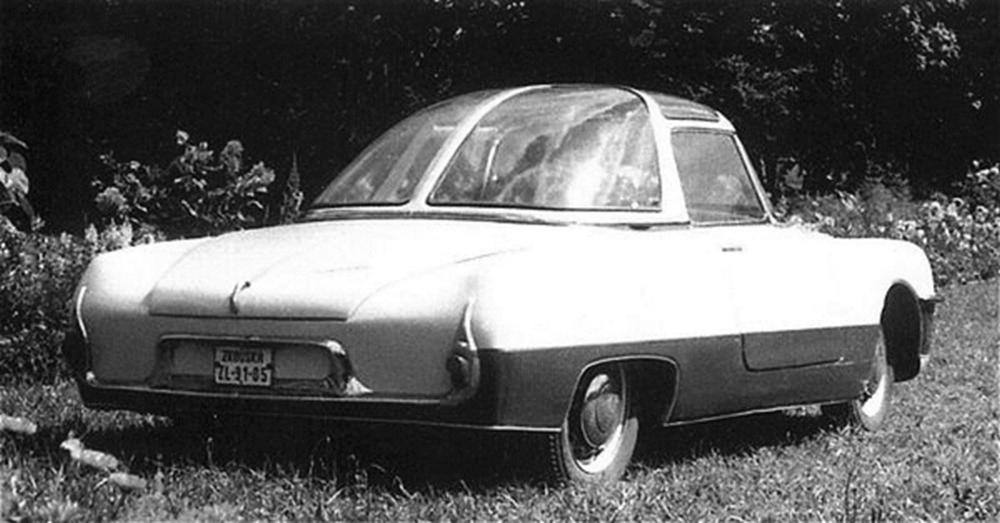
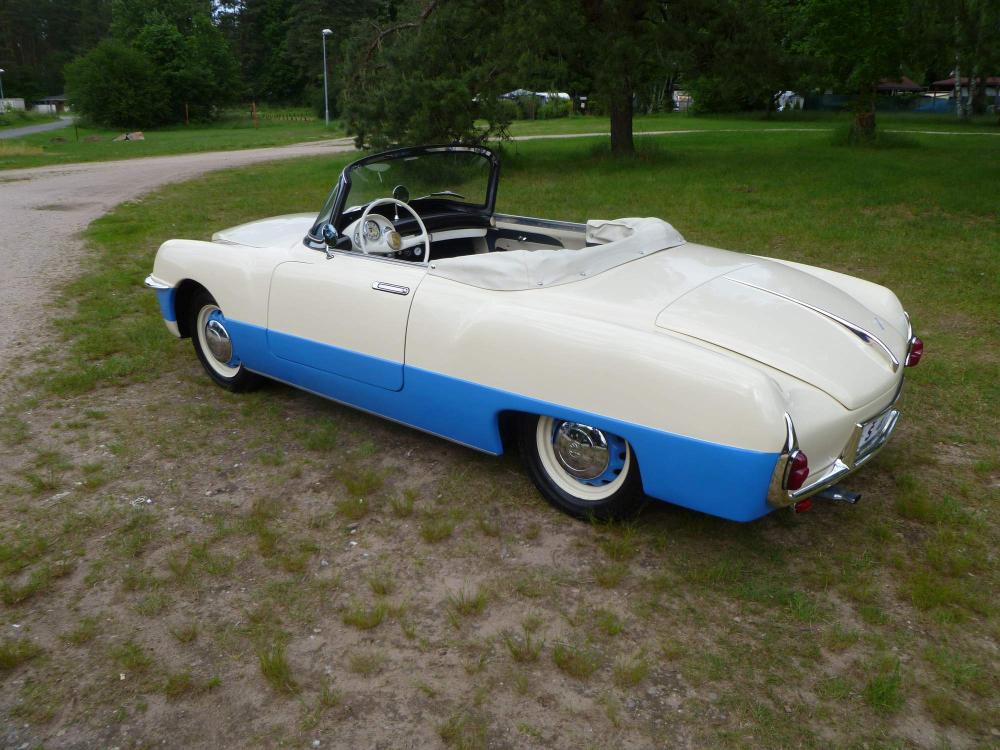
The hardtop maker obviously was a lover of the P-38 Lightning! Cool car, thanks Geoff.
Skoda was a munissions manufacturer before building cars. They were well staffed with engineers to build high quality products. They have built some sports cars in recent years.
I like the look of this car…SO unusual & also think the two tone paint looks cool!
I would like the front better if they would have taken the grill, headlights, and rim and rotated them 180 degrees (take the grouping and turn them up side down).
They also missed it on the two tone paint scheme.
Looks like a very well built car! thanks for sharing the story.
Wow Geoff
Just when I thought I had seen of all the vintage fiberglass concept cars ,you show us this fascinating piece of beautifully restored history!
Interesting how a manufacturer like Skoda ,with limited resources could create this. Wonder if those are ’49 Lincoln headlite bezels?
Many thanks for sharing . See you in Amelia ! Marty
@Marty…glad you liked the story Marty. So much “glass…” so little time 🙂 Rick & I are getting our Meteor painted for Amelia (we hope) in next 2 weeks. No rest for the weary….but the same for you too! Cover your current car as a feature in Forgotten Fiberglass? Let me know…be well and see you soon. Geoff
Geoff
Having my efforts in the “itching powder mine” covered by Forgotten Fiberglass would be fantastic! We’ll talk in Florida.
Can’t wait to see the vintage ‘glass at Amelia!!